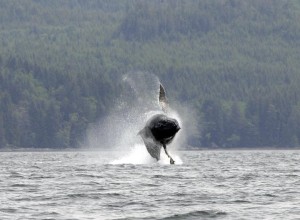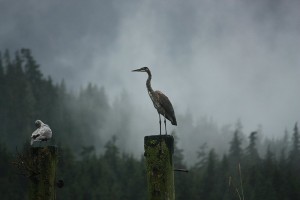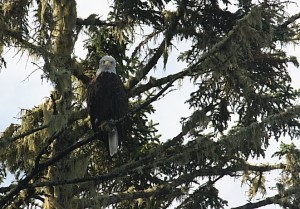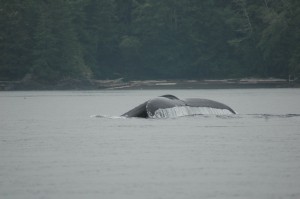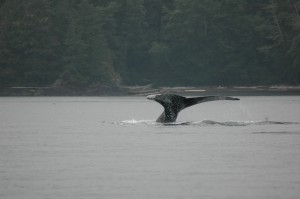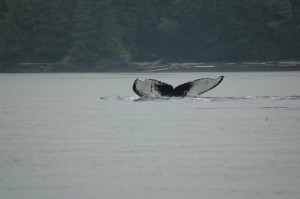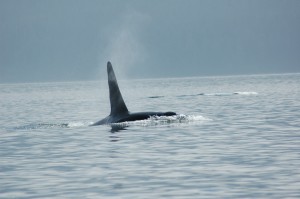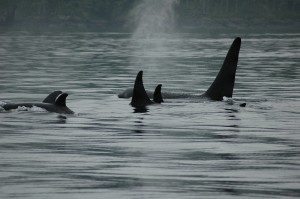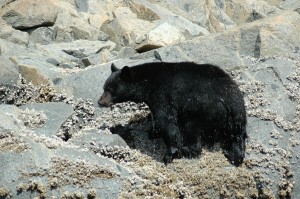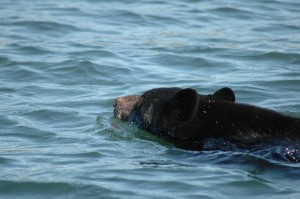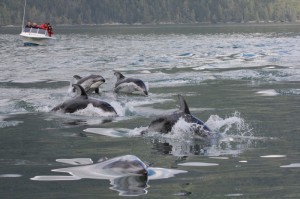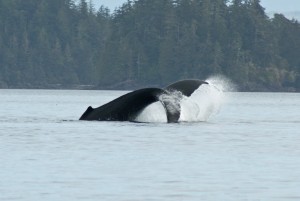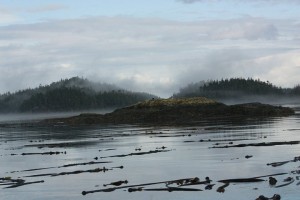
Yes there is a bald eagle on the centre of the rocky island. The area between Minstrel Island the home of Grizzly Bear Lodge and the shore of Vancouver Island along Johnstone Strait has hundreds of small islands. On the whale watching tour from the lodge we pass many islands and along their shore are dozens of eagles and often black bears. The black bears require a low tide to encourage them to scour the beach for food. This inter-tidal zone “food” is high in protein and is made up of crab, clams, barnacles, amphipods and other tiny invertebrates. The guests that have not spent much time on coastal waters are always amazed at the amount of wildlife that can be viewed before we get to the area of the humpback whales, killer whales and other marine mammals.
